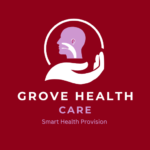All You Need To *Know About Gardasil*

Gardasil is a vaccine that protects against certain types of human papillomavirus (HPV).
Types of Gardasil Vaccines
The different types include the following:
-
1. Gardasil (quadrivalent):
Protects against HPV types 6, 11, 16, and 18.
-
2. Gardasil 9 (nonavalent):
Protects against nine HPV types: 6, 11, 16, 18, 31, 33, 45, 52, and 58.
Benefits
-
1. Prevention of cervical cancer:
Gardasil vaccines can help prevent cervical cancer caused by HPV types 16 and 18.
-
2. Prevention of other HPV-related diseases:
Gardasil vaccines can also help prevent other HPV-related diseases, such as genital warts, anal cancer, and oropharyngeal cancer.
Mechanism of Action
-
1. Virus-like particles (VLPs):
Gardasil contains VLPs that mimic the structure of HPV, but are non-infectious.
-
2. Immune response:
When the vaccine is administered, the VLPs stimulate the immune system to produce antibodies and immune cells that recognize and target HPV.
-
3. Neutralization:
The antibodies produced in response to the vaccine can neutralize HPV, preventing it from entering cells and causing infection.
Protection
-
1. Prevention of infection:
Gardasil helps prevent infection with the targeted HPV types.
-
2. Prevention of disease:
By preventing infection, the vaccine also helps prevent HPV-related diseases, such as cervical cancer and genital warts.
Target Population
-
1. Recommended for adolescents and young adults:
The Centers for Disease Control and Prevention (CDC) recommend HPV vaccination for adolescents and young adults, typically starting at age 11 or 12.
-
2. Catch-up vaccination:
Catch-up vaccination is recommended for individuals who did not receive the vaccine series at the recommended age
Administration
Gardasil is administered through:
-
1. Intramuscular injection:
Gardasil vaccines are administered via intramuscular injection.
-
2. Dosing schedule:
The dosing schedule for Gardasil vaccines varies depending on the age of the individual and the specific vaccine used
Gardasil (Quadrivalent) and Gardasil 9 (Nonavalent)
-
1. Ages 9 - 14 years:
Two doses, 6-12 months apart.
-
2. Ages 15 - 45 years: :
Three doses, with the second dose given 1-2 months after the first dose, and the third dose given 6 months after the first dose
Special Considerations
-
1. Immunocompromised individuals:
Individuals with weakened immune systems, such as those with HIV/AIDS or taking immunosuppressive medications, may require a three-dose schedule, regardless of age.
-
2. Catch-up vaccination:
Individuals who start the vaccine series at an older age may require a three-dose schedule.
It’s essential to follow the recommended dosing schedule to ensure optimal protection against HPV-related diseases. Consult a healthcare professional for personalized guidance.
Gardasil vaccines have been shown to be safe and effective in preventing HPV-related diseases
Share Post On:
Recent Posts
-
Nuggets of ORL-RHINOLOGY
-
Nuggets of Otorhinolaryngology-Basic sciences
-
Anatomy of the Muscles of the Soft Palate
-
Ethmoidal Arteries Ligation for Epistaxis
-
Submucous Cleft Palate (SMCP)
-
Approach to Ligation of the External Carotid Artery
-
Approach to Managing a 3-Year-Old Boy with a Foreign Body in the nasal cavity.
-
Approach to Managing a 3-Year-Old Boy with a Foreign Body impacted in the ear canal.
-
Endoscopic Sphenopalatine Artery Ligation (ESPAL) for Epistaxis
-
Surgical Management of Epistaxis
-
Technique of Incision and Drainage of Septal Hematoma/Septal Abscess
-
Upper Aerodigestive Tract Foreign Body Impaction
-
Incision and Drainage of Hematoma Auris
-
Rigid Bronchoscopy for Retrieval of Foreign Bodies in Children
-
Foreign Body Impaction in the Larynx, Trachea, and Bronchi
-
Leadership Position is a Tool, not a Trophy
-
Carcinoma of the Oropharynx
-
Peritonsillar Abscess
-
Ethics of Doctor-Patient Relationship
-
Doctor-Patient Relationship Case Scenarios
-
Asymmetrical Tonsils and Approach to Evaluation and Management
-
Nasal Polyposis
-
Rigid Oesophagoscopy and Complication
-
Anatomy of Oesophagus
-
Stridor, Snoring, Stertor And Wheezing: How They Compare
-
Temporomandibular Joint (TMJ)
-
Otoacoustic Emissions
-
Tympanometry
-
Functional Endoscopic Sinus Surgery (FESS)
-
Tracheostomy
Categories
Get in Touch
Read doctor-produced health and medical information written for you to make informed decisions about your health concerns.

